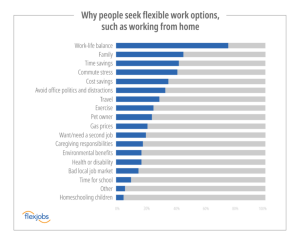To craft a compelling marketing mix, you first go through a gauntlet of research and extreme mental exertions. Yet, this entire effort culminates in spending your top dollars to bring the right eyeballs to your business, only for you to end up with a customer base and then lose them in droves after making their first purchase.
“Where did I go wrong?” you wonder. Your customers cannot even purchase from you again, let alone spread the gospel about you. The culprit? Post-purchase dissonance. It is also known as buyer’s remorse.
Post-purchase dissonance is a brute. It (adversely) affects post-purchase satisfaction and blocks repurchase intentions. It also leaves you chasing a new customer all the time — a very costly thing to do.
Fortunately, it is often caused not by a defect in a product itself. According to CEOpedia, “The phenomenon of dissonance is characterized by the fact that we have doubts about the product purchased and we wonder if there was not a better choice, whether we made the best decision.”
CEOpedia further laid it bare, “The post-purchase dissonance is caused by natural thinking of man, it is a normal phenomenon, and it is often encountered.”
To avoid this remorse, prospects, on their part, research as much as possible about the product. And with the Internet turning to a primary source of information for many, then online marketers have a role to play.
Do not mind those who may say there is little marketers can do in the face of it. Even they, just like everyone else, agree that after making a backbreakingly right product, the next most crucial thing to do in business success is shaping perceptions.
Hence, it all boils down to one thing: leaving favorable information about your product where prospects will first look.
Below is a list of what online marketers can do to combat post-purchase dissonance.
-
Get every customer signed up to your email list.
It doesn’t cost a dime to get a purchasing customer to drop their email address. If you hand out a contact form for a purchasing customer to fill, most customers will happily fill it.
An email list is essential for the one simple fact that it affords you the chance to speak to multiple people at the same time and giving each one of them the feeling of talking to them alone. It isn’t rocket science either.
To do this, you need a proper email segmentation that allows you to classify your subscribers and send customized emails to each segment.
And with that out of the way, it is time to sell your new customer on the rightfulness of the decision they’ve just made by purchasing your product. But that’s often where the mistake is.
These days, most emails customers get always have something new to show, some new deals or offers that will end soon, or coupons. That is one of those times when marketers need to slow down on offers.
The process of a customer’s buying a product, enjoying it, and purchasing it again or another product from the same brand can be likened to eating. Eating without proper mastication leads to indigestion. While ultimately, food is meant to keep us alive and healthy, not taking it the right way leads to the opposite.
The same analogy goes for ads. While ads are served to bring in customers and keep them loyal to a brand, not allowing for a proper process can elicit aversion or even raise doubts in the mind of a new customer.
When sending an email to a new customer, these are the things you should do instead.
- Turn your product to a high-involvement product: Products abound, and in this modern world where ideas spread faster than light, it is unlikely that your brand will be the only one selling whatever you sell. But turning an ordinary product into a high-involvement one is marketing sorcery. Positioning cooking oil as non-cholesterol turns it to gold in the heart of a wife that fears husband may get a heart attack. To help you craft the kind of email that will suit this purpose, turn to copywriters.
- Discuss something outside the box to shore up goodwill, for example, your CSR: As the world continues to battle with all sorts of woe, even the commonest consumer cares about who is saving the environment or feeding the hungry. Consider this research from Forbes, which says an average American consumer will drive nearly 11 minutes out of their way to buy a cause-marketing product. A mind occupied with goodwill for your brand can hardly ever have time for remorse.
- Use user-generated content (UGC) to tell a story: UGC has been with us for a long time. Companies use UGC to show prospects and new buyers alike that their other customers are not regretting spending their dollars with them. And this isn’t a prurient claim. Emarketer reports that more than 80% of customers say they trust businesses that have lots of customer reviews. That is just one of many data that proves the effectiveness of user-generated content. When sending an email to your new customer, one of the marketing-smart things you can do is to tell them a story that lets them see other customers are loving it with you.
Yes, you do have attractive offers you want to show that new buyer. But have you ever taken a step back and wonder what their opinion is over their first purchase from you?
Now don’t forget the one golden rule of selling though: your product must first deliver on all its promises, then let marketers deal with the rest.
2. Guest blogging and press coverage
We all do guest blogging for referral traffic and link-building. But in the eyes of a consumer, there is more to see your brand name in a lot of places than domain authority.
Guest blogging is one of the most prized tools in the arsenal of a content marketer. In all fairness, nothing beats the ability to guest blog on a considerable number of best publications there are online, and earn that referral traffic and backlinks.
But an additional benefit of guest blogging is the “As seen in” tag you must have seen in the many sites of online marketers. It indicates credibility, it is social proof and it works. In 2017, Kantar released a report that says 72 percent of consumers see news magazine as their most trusted sources of information.
That means random blogs or narrowly-niched down affiliate marketing blogs are not the most trusted source of information for your costumers. And this brings Forbes, Business2Community, Entrepreneur, and their likes to the forefront.
When your dissonant customer begins his information search online, where do you think he is going to head first among several options on the SERPs? Your blog site or the New York Times site?
That’s why guest blogging on third party sites and getting some press coverage on high-end publications should be factored into the equation.
We can also call this the domain of public relations. Whether you are going to be pushing your guest blogging campaign by yourself or hire a PR practitioner/firm to help you take care of this aspect, the bottom line is the same: put favorable information about your brand where your customers are likely to look.
3. Social media advocacy and free education
These days, a lot happens through social media. Communities are easily created, and people of similar interests from all walks of life become brothers in arms because they share the same bias.
For a newcomer, seeing a lot of satisfied users swarming around your brand will lessen their remorse and will give them a sense of belonging to a community of like-minds. And social media can be the perfect theatre for such operations.
Take, for example, a marketing ingenuity from Ogilvy for Coca-cola. In 2014, Coca-cola came up with personalized coke bottles, and the whole world flared up in nostalgic excitement.
To keep the momentum, Coca-cola encouraged customers to share pictures of themselves drinking with their personalized drinking coke bottles. The excitement, as contrived, stayed on for a long while and several customers joined the train.
It is hard to hold a supposition that you have overspent on or purchased the wrong product when you see a supporting multitude, most of whom are not lesser smart than you are. Psychologists refer to it as social influence.
And social media has made it easy for businesses to tap in. Unless your product is actually a functional flop or you have promised more than it offers in your advertisement, you sure do have a host of loyal customers to represent you.
Similarly, providing free education for your customers about your field may lessen remorse. A bunch of information is out there misinforming people just to make sales.
If you have a new slant to add to the field of information available or even a better way of imparting it, you can use online course platforms to create deep connections with your customers and sell them on the rightfulness of buying your product.
In the past few months, Neil Patel has launched no less than two online courses, each and every one of them strategically design to tell online marketers to use and trust Ubersuggest.
In each dissemination of knowledge, there is always an addition or subtraction, all of which gives you another opportunity to make your customers see things your way.
How you choose to do it is up to you.
Conclusion
For your own sake and for your customer’s purpose, develop the best product that satisfies the customer and delivers on all its promises. The products that do well in the market today do not owe their success to pure marketing ingenuity, but more to their originality.
A subpar product is designed to fail in the long run, and before you embark on any marketing scheme, you should hold that as an article of faith.
Human psychology, nevertheless, can be unpredictable. Sometimes, buyer’s remorse is justified, sometimes it is merely a result of trivialities, possibly born out of peer negative review, or even sheer thought that a newly discovered brand is better.
That is how online marketers can fight and forestall post-purchase dissonance.
Digital & Social Articles on Business 2 Community
(210)






